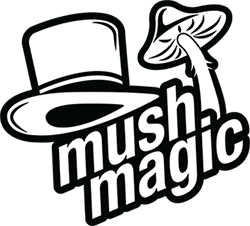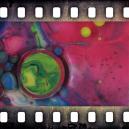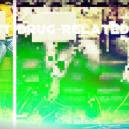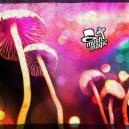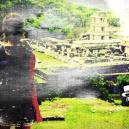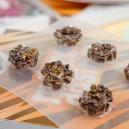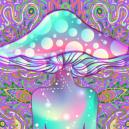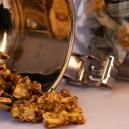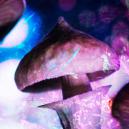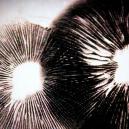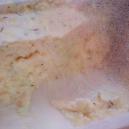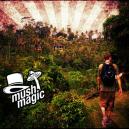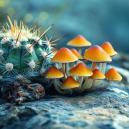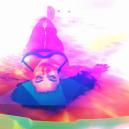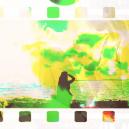Liberty Caps: A Famous Magic Mushroom
Published :
May 15th, 2017
Categories :
Default
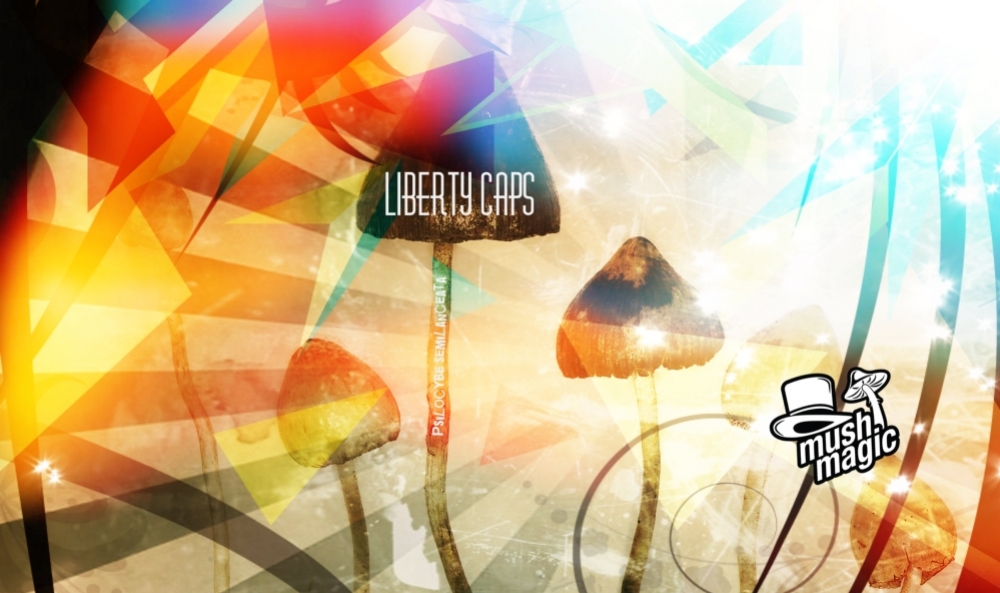
Don't be fooled by the small size of these magic mushrooms; they surely pack a punch. With an average of almost 2% psilocybin, these tiny fungi are highly sought after by free-thinkers and psychonauts.
WHAT ARE LIBERTY CAPS?
Psilocybe semilanceata, also known as liberty caps, are a psychedelic mushroom species that contain the hallucinogenic compounds psilocybin and psilocin. They are the most popular, potent, and easily available magic mushrooms in nature.
Some common names for Psilocybe semilanceata are: Liberty Caps, Blue Leg, Meditationspilz, Magic Mushrooms, Narrenschwamm, Paddlestool, Pixie Caps, Psilo, Schwammerl, Shrooms, Witch Cap, and Zwergenhut.
ETYMOLOGY
Psilocybe roughly translates to "smooth head." The word is derived from the Ancient Greek word psilos, meaning smooth or bare; and the Byzantine Greek word kubê, meaning head. It's a reference to the smooth cap surface of many mushroom species.
The word semilanceata is Latin in origin and breaks down to semi, which means half, and lanceata which means spear-shaped. Many of these liberty caps actually do resemble little, dull spears, so the etymology is fairly accurate.
PSYCHEDELIC USES
Mushrooms have been used for their psychoactive and spiritual properties since ancient times, but the first recorded incident of liberty caps specifically being used is from 1799. According to chemist Augustus Everard Brande, a family in London experienced symptoms which included pupil dilation, hallucinations, and spontaneous laughter every time they ate a certain type of mushroom picked from London's Green Park. Brande was later able to use James Sowerby's 1803 book titled "Coloured Figures of English Fungi or Mushrooms" to identify that they were indeed eating liberty caps.
Since then, there have been several studies done to learn more about the compounds in this mind-bending fungus. In 1985, a study by Dutch chemist Tjakko Stijve and partner Thom Kuyper, a microbiologist from Wageningen University, concluded that Liberty Caps had a very high concentration of psilocybin, around 1.7%.
A Finnish study in 1987 tested the potency of liberty caps over time. It was discovered that psilocybin levels decrease only slightly over the years. Levels of psilocybin were detected in liberty caps that were over 100 years old!
In 1993, German chemist Jochen Gartz conducted another study on liberty caps which showed an average of 1% psilocybin. However, some liberty caps that he analysed had a maximum of 2.37%, which is the highest concentration of psilocybin for any mushroom species.
The results of all these studies prove that liberty caps are not only the most potent type of magic mushroom in nature, but they also sustain very consistent psilocybin levels.
HABITAT AND DISTRIBUTION
Liberty caps can be found in many locations from North America to Europe, but they are most commonly scattered throughout Britain and Ireland. In North America, they are frequently found in the Pacific Northwest region.
Liberty caps are a grasslands mushrooms species that can usually be found in meadows, lawns, and pastures, but they have the ability to grow in other conditions as well. They can grow solitarily or in groups, and they are often found growing near animal waste or freshly fertilised grass. The mushroom feeds off of decaying plant matter and has a preference for cool, damp areas.
LEGAL STATUS
The legality of this magic fungus varies from region to region, but in most places, it's completely illegal. In Europe, magic mushrooms are decriminalised to grow and possess in the Czech Republic and Spain, nowhere else. In the United States, magic mushrooms are a schedule 1 narcotic, which means there are no recognised benefits. Unlike the variance when it comes to cannabis laws by state, magic mushroom are prohibited across the board.
Hallucinogenic mushrooms are completely legal in Brazil and mostly accepted in other South American Regions. They are even legal in a few areas in the middle east. Bali used to be a well-known shroom haven until psychoactive mushrooms were recently made illegal in most parts of the country. Despite the new legislation, there are some areas in Bali where it's still legal to openly sell and consume mushrooms.
IDENTIFICATION GUIDE
Liberty caps have a very distinctive looking cap. It's about 2.5cm in diameter with a rounded, cone-like shape. Their colour varies from yellow to brown, which fades to a lighter colour as the mushrooms age, and the caps are covered in grooves when wet. Liberty caps are often recognised by the small nipple-like protrusion on top of the cap. The spore print on the inside of the cap, which is extremely important to pay attention to, should be a dark purple colour.
Stems are about 4-10cm tall and 2-3mm in diameter. Stems are usually wavy and a similar colour to the cap, although sometimes they can be slightly lighter and tinted blue at the base. Spores are ellipsoid in shape, smooth, and measure around 11.5-14.5 by 7-9μm.
A few different species produce mushrooms that look very similar to Psilocybe semilanceata but could actually be dangerous to ingest. This includes Mycena, Inocybe, Nolanea, and possibly others. All of these could easily be distinguished by spore print colour.
That's why it's imperative to know what you're looking for. When going on your own shroom hunt, you'll definitely want to know of any key identifying factors. If you want to be absolutely sure you're not making any mistakes, the best bet would be to buy your mushrooms or spores from a reliable retailer.
